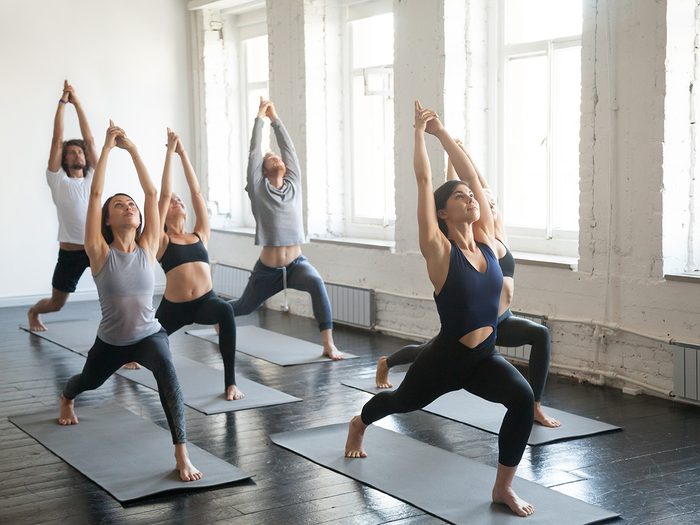
Don’t expect miracles
As much as you fantasize about it, you’re not going to have extreme weight loss in a week. Instead, you want to set realistic goals and then be prepared to stick with your diet plan for weeks, even months. “I tell clients that it takes four weeks to feel better, six weeks to see some differences, and really a full eight weeks to see a lot of changes and long-term results,” says Phyl London, a Level IV Master Trainer specializing in Pilates and Group Exercise instruction who created Bodiphy®, a program that brings you through Pilates, Barre, strength, and alignment training. That means you need to stay on track even when the scale isn’t budging — because it may start moving the following week!
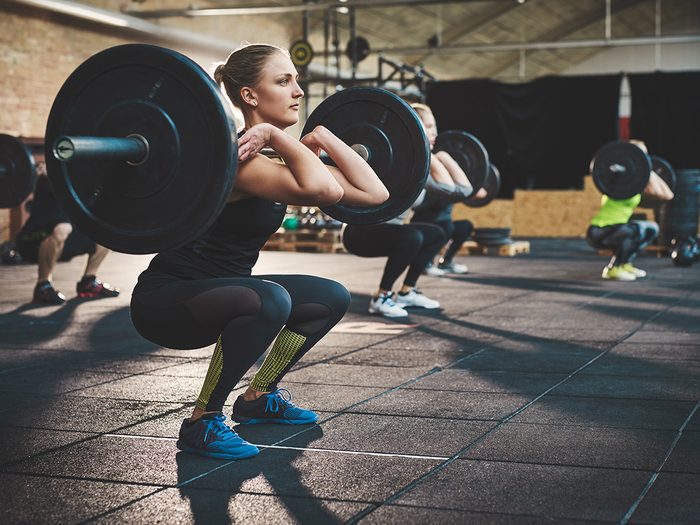
Any diet works, as long as you stick with it
Low-carb or low-fat? Don’t stress. A study published in JAMA found that what diet you choose really doesn’t matter if you want extreme weight loss. What’s more important is that you actually follow it. Weight-loss differences between popular diets like Atkins, Weight Watchers, Jenny Craig, South Beach, and Nutrisystem — which were all among those included in the study — are minimal. And they have similar levels of effectiveness, researchers found.
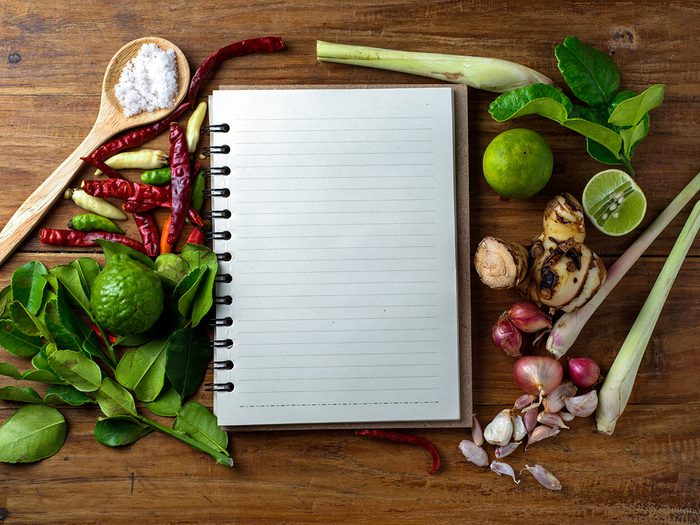
If you bite it, write it
Before you overhaul your eating habits, try one of our best extreme weight loss tips: Record everything you drink and eat. Take advantage of apps and website or use pen and paper. Note trouble spots, like that 3 p.m. candy bar or evening bowl of ice cream. “This is the single most important thing you can do when you’re watching your calories,” says Paige Waehner, a certified personal trainer and author of The About.com Guide to Getting in Shape. “I have so many clients who think they’re eating healthfully, but writing down every bite makes you aware of those extra calories you eat without even realizing it. Just an extra handful of nuts could cost you more than 100 calories.”

Tell everyone about your campaign
Don’t keep your weight-loss goals a secret. Improve your chances of weight-loss success by spreading the word to friends and family about your new diet. It will help motivate you and increase your accountability. “Almost no one succeeds without support from the people around them,” says Malia Frey, MA, CPT, CHC, a health coach and personal trainer. “Asking for help is the most important part of your weight-loss program.”
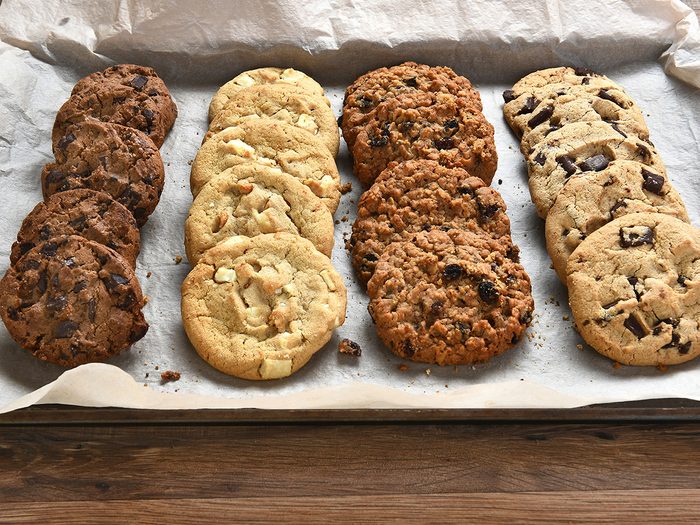
Sweat the small stuff
A free sample of pizza at the grocery store. A nibble of the cookies your colleague brought into work. A bite of your son’s grilled cheese sandwich at the diner. Yes, it may just be a taste here and there but the calories from those BLTs — bites, licks, and tastes — really do add up. So, heed this weight-loss tip: If you’re not hungry or a food is not on your meal plan, don’t eat it.
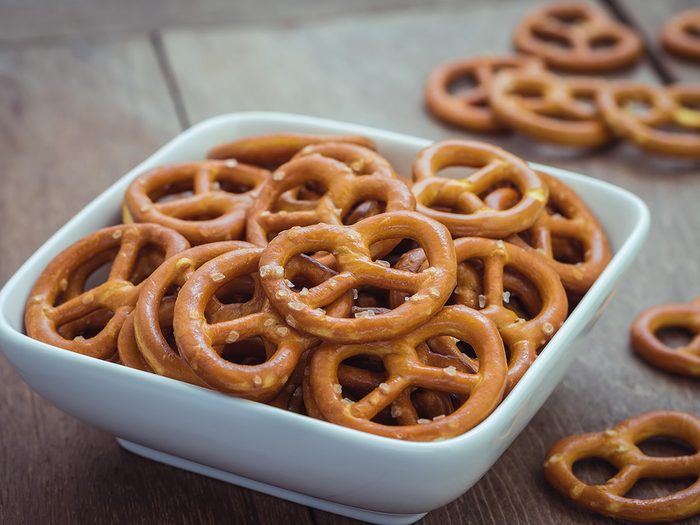
Know your areas of weakness
“Chocolate and ice cream can be in my house for days and I won’t overeat them,” says London. “But I can’t have tortilla chips, pretzels, or pita chips in the house. Those are the kinds of foods that I’d overeat if I came home tired from a long day at work.” Get rid of your triggers. Then, restock with healthy fare like vegetables, fruits, whole grains, lean meats, and low-fat dairy foods. And make those healthy foods easy to eat by displaying them in a beautiful bowl on the counter or pre-chopping them and storing them in clear containers in the fridge. That’s just one of the ways you can manage extreme weight loss without a lick of exercise.
The One Ingredient You Should Add to Your Coffee to Lose Weight
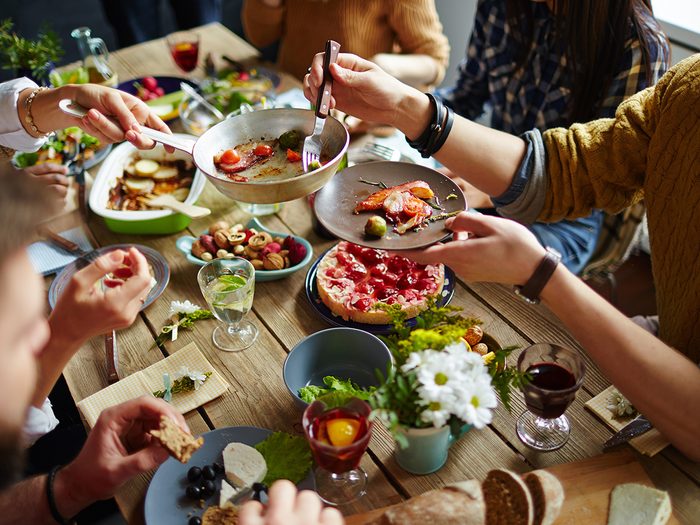
Don’t pig out at dinner if you want extreme weight loss
After a long hard day, most of us tuck into a large meal. However, multiple studies have found that this practice is linked to weight gain. When researchers had one group of people eat a bigger breakfast and smaller dinner, and another group eat the reverse, it was the big breakfast group that managed extreme weight loss. And people in the big dinner group actually ended up gaining weight.
Adding This Food to Your Breakfast Could Help You Lose Weight
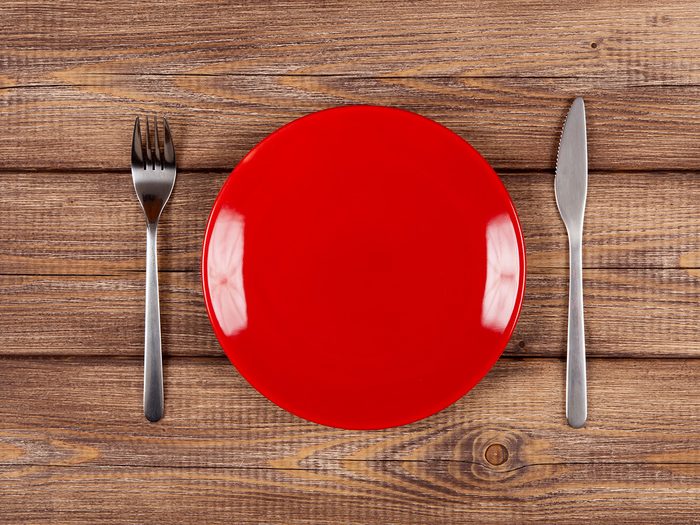
Eat on red plates
To avoid overeating, try a scare tactic, courtesy of your dishware. Research shows that the plates you serve your food on impact your perception of taste and flavor. Charles Spence, author of Gastrophysics The New Science of Eating, found that red plates trigger an avoidance or danger signal that leads us to eat less.
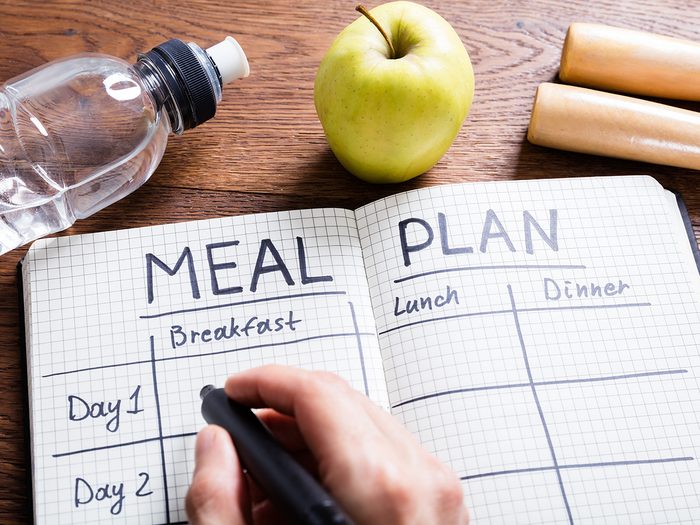
Don’t follow every trend
Sometimes what works best is what works best for you. “Don’t assume that breakfast is the most important meal of the day, that you should eat every three hours to curb hunger, or that you shouldn’t eat past 7 p.m.,” says Frey. “These diet guidelines don’t work for everyone.” Instead, she suggests that you create and follow a meal routine that accommodates you and your needs. “Getting proper nutrition is the goal. The schedule by which you meet those needs is up to you.”
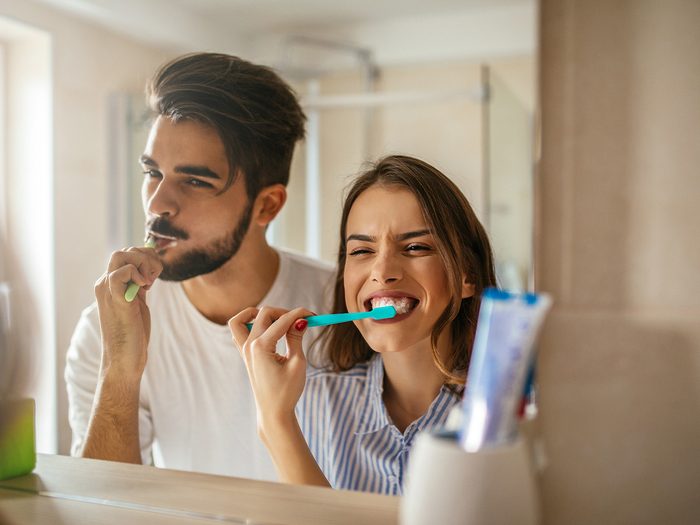
Brush your teeth earlier
Have you ever brushed your teeth and then had a sip of orange juice? The beverage probably tasted sour and not too pleasing to the palate. That can work to your advantage when you’re trying to avoid post-dinner munching. Try brushing your teeth earlier in the evening instead of right before bedtime. “After you brush your teeth, it’s much less likely that you’ll find yourself snacking on empty calories later in the evening,” says Pete McCall, host of the All About Fitness podcast, personal trainer, strength coach, educator, and author.

Buddy up
The road to extreme weight loss can be bumpy. Make the trip a bit smoother by finding someone you must be accountable to on your journey. “Support from others on a weight-loss journey helps tremendously,” says Deb Gehringer, a CrossFit coach at Guerilla Fitness in Paramus, New Jersey. “You can share ideas, recipes, celebrate together, and complain together too.” Just be sure to choose the right buddy for your journey. “We all have friends who are health saboteurs,” says Dara Godfrey, MS, RD, a registered dietitian who works in private practice in New York City. “Try to always avoid dining experiences with them. Or, make sure to stand up for yourself when ordering something healthy.”
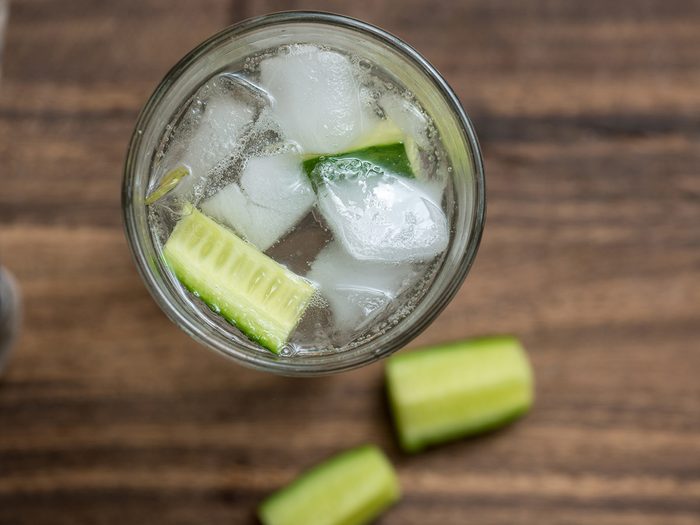
Fill ‘er up on water
Drinking ice-cold water can help you burn more calories throughout the day, according to a study published in the Journal of Clinical Endocrinology and Metabolism — up to 490 calories a week! Other research shows that drinking water before a meal can help you eat less. And because there are so many other health benefits to staying hydrated, it’s a good idea to keep tabs on how much you’re guzzling down. Consider buying a reusable water bottle that’s at least 20 fluid ounces. “That way you know exactly how much water it holds and you can refill it as many times as your body requires,” says Alix Turoff, MS, RD, CDN, CPT. And water doesn’t have to be boring. “Jazz it up by adding fresh lemon, cucumber, mint, or any other fruit or veggie. Not only does it make the water taste more interesting, but when you take the time to do something ‘special,’ you’re more likely to drink the water.”
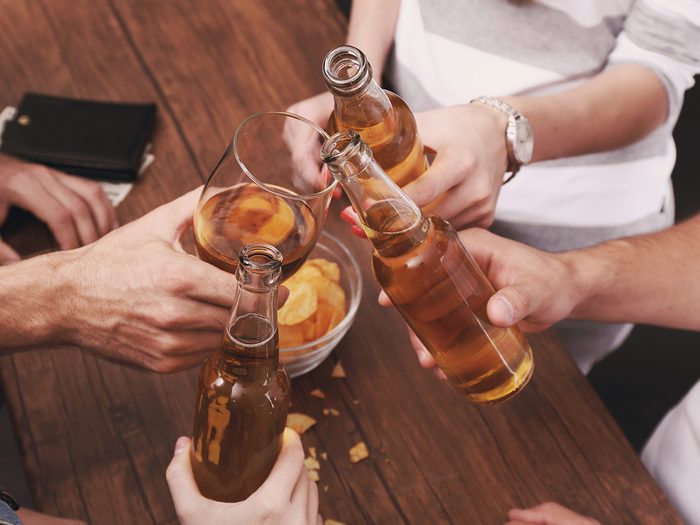
It’s OK to let loose sometimes, if you prepare
“In a perfect world, you’d be able to plan each meal to ensure that you stay on track,” says Allison Tibbs, a San Francisco-based personal trainer and healthy lifestyle coach. “However, life happens.” She explains that if you know that you’re going out for apps and drinks tomorrow night, make sure that your breakfast, snacks, and lunches for that day and the day after are extra healthy. “This way, you won’t have to worry too much about your evening festivities,” she adds. “If you’re doing your best to eat on track most of the time, one night out won’t sabotage your hard work.”
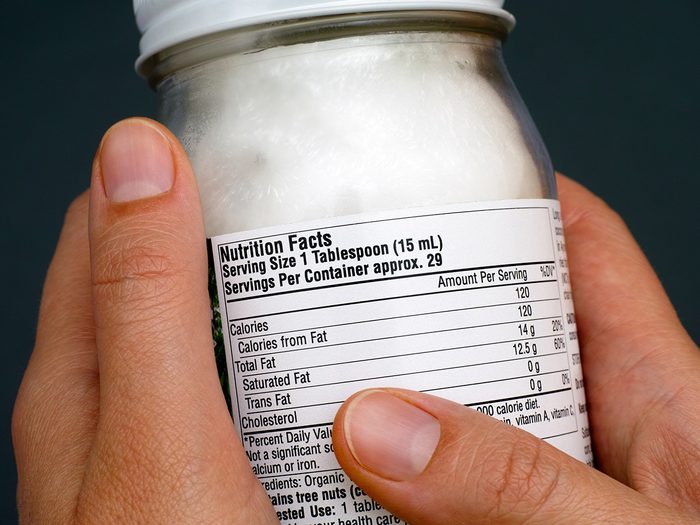
It pays to become a label pro
Kristin Kirkpatrick, MS, RDN, manager of wellness nutrition services at Cleveland Clinic, says that when choosing foods to buy, first review a label’s ingredients and the numbers that are important to you — including fiber, protein, calories, sodium, sugar, and fat content. “Avoid looking at the front of the product,” says Kirkpatrick. “That area contains only smoke-and-mirrors marketing to cajole you into purchasing a product.” If you see words like low fat, natural, healthy, and diet on a product, be wary, she says. “Foods that actually fit all these descriptions, like an apple, don’t need to sell themselves.”
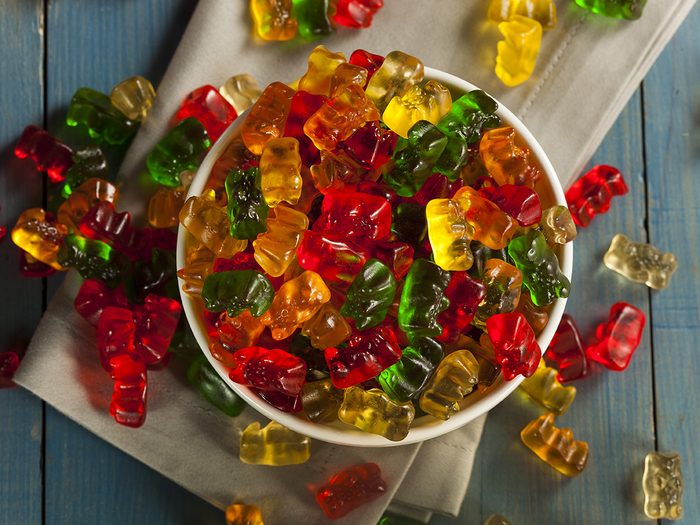
Go ahead, think about candy
You heard that right! Researchers from Carnegie Mellon University in Pittsburgh found that by fantasizing about your favorite treats, your actual consumption of that treat may be reduced — because your brain has already “experienced” them on some level. So, feel free to daydream about the chocolate-caramel bar or gummy bears you saw at the grocery store checkout line. Just don’t buy them!
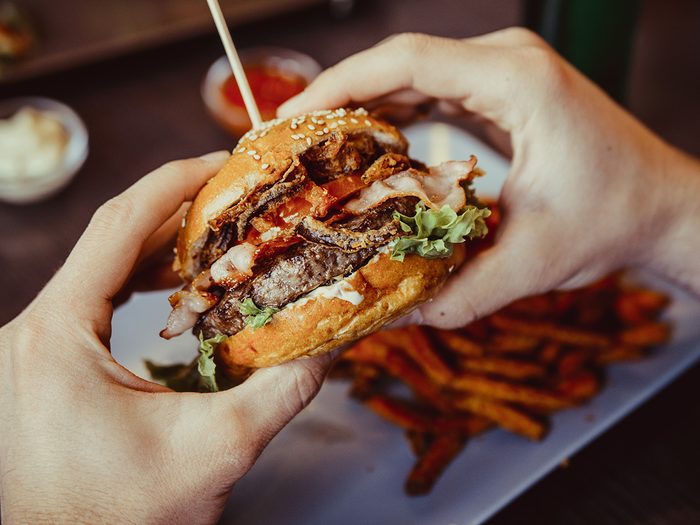
Cheat meals don’t have to wreck your diet
If you eat healthfully most of the time, an indulgence here or there doesn’t have to be bad for you, says Nadia Murdock, fitness expert and coach. If you’re craving a burger, have one without the guilt. “Eat only half the bun and ditch the fatty condiments like mayo and ketchup, which pack on a lot of sugar,” she says. The same rule goes for cocktails, she says. Enjoy some of your favorites while staying on track. “If you love white wine, add seltzer for a white wine spritzer,” Murdock says. “You still can enjoy a glass — with half the calories.”
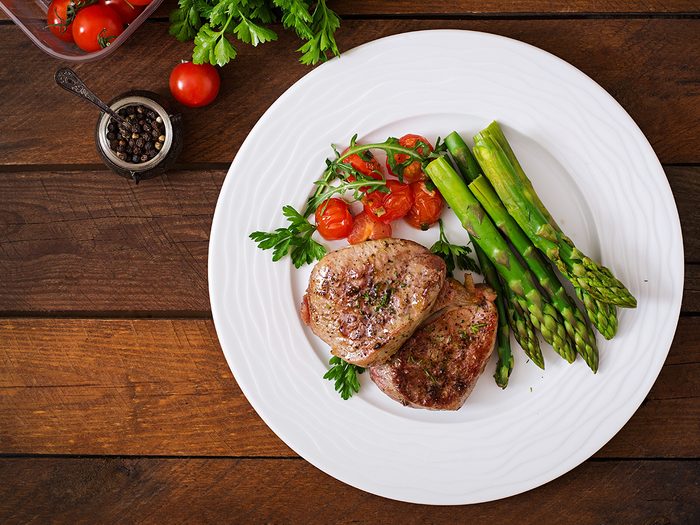
Train your eye
Learn how to eyeball proper portion sizes. First, educate yourself on the right portions for the foods you eat on a regular basis, suggests Waehner. You can use tools such as plates with markings for portions of proteins, fruits, and vegetables. “It’s a lot of work, but try it for a week,” she says. “You’ll be surprised by how much you eat and that you can usually satisfy your hunger with less food,” resulting in more extreme weight loss.
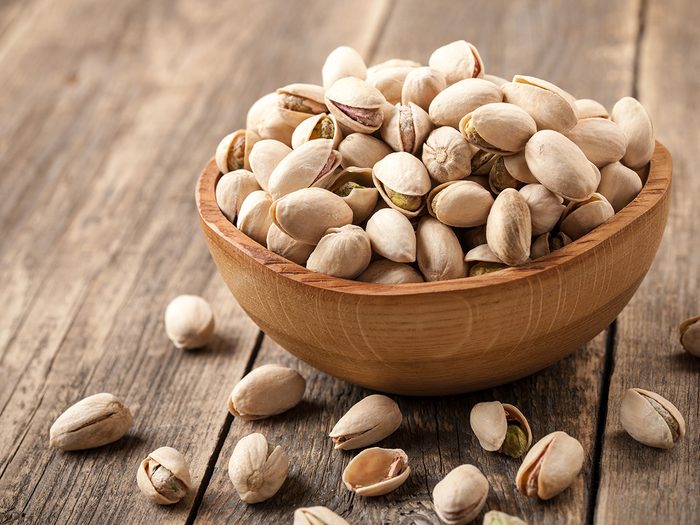
Snacking isn’t all bad
Snacking — when done correctly — can actually help you with extreme weight loss. You heard that right! “I like to snack on 100-calorie packs of pistachios,” says Amy Gorin, MS, RDN, owner of Amy Gorin Nutrition in the New York City area. “The shells provide a visual cue of the amount that you’ve eaten, which may help you stop noshing before you have extra servings.” Shelling the nuts also helps slow down your eating. In one preliminary study in Appetite, volunteers eating in-shell pistachios consumed 41 percent fewer calories than people snacking on the shelled version. And here’s how you can eat larger portions and still lose weight!
